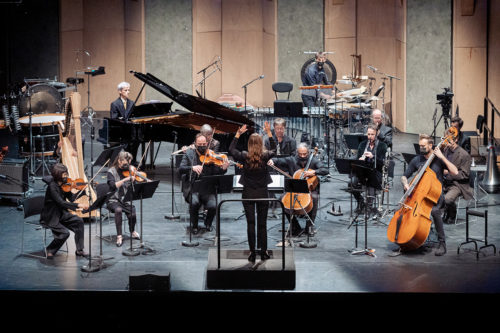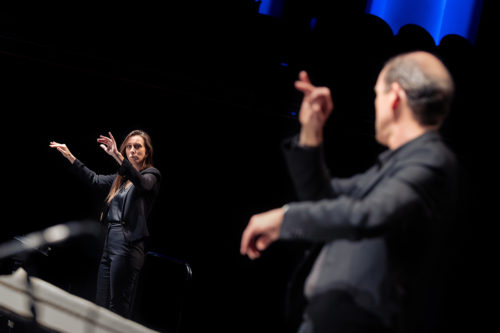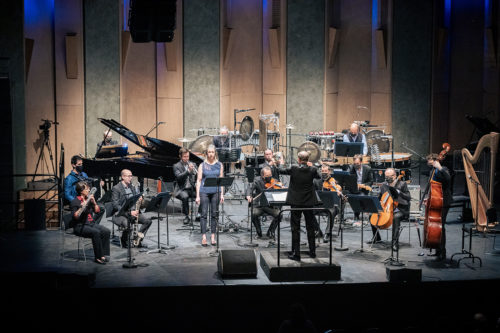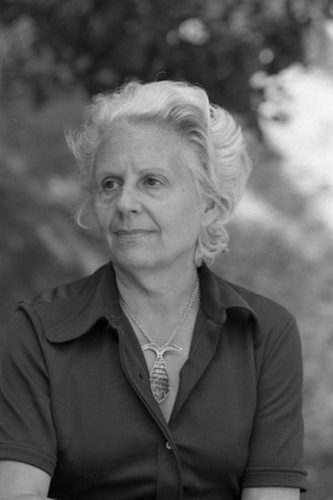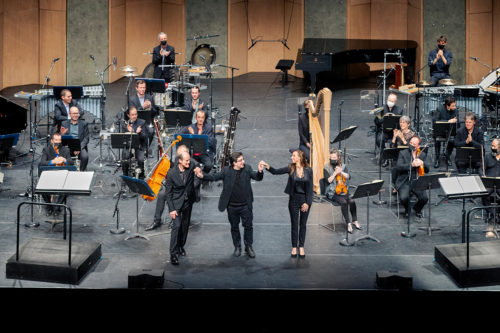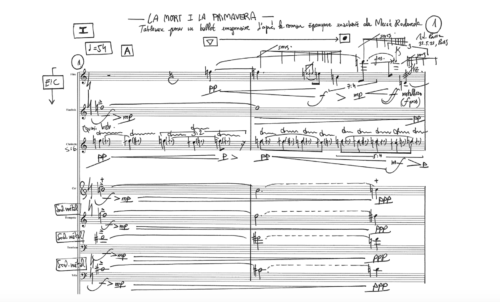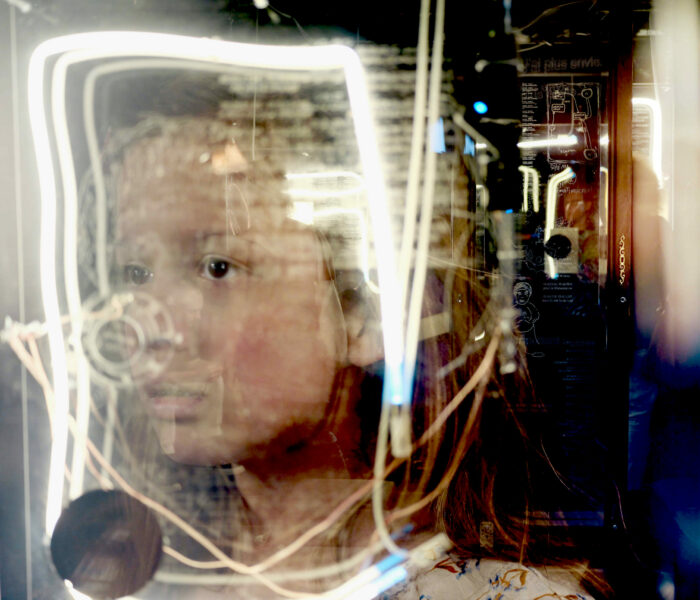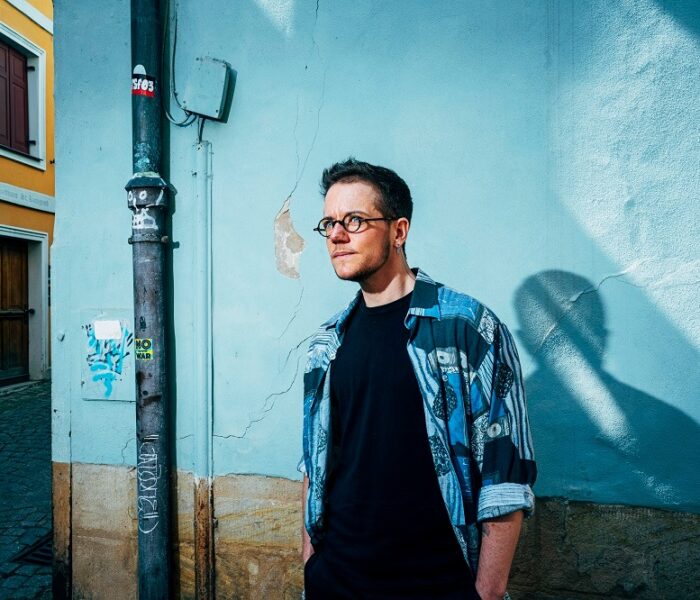Deux ensembles et deux chefs sont conviés dans ce concert de création où alternent puis se rassemblent le Remix Ensemble, dirigé par son chef Peter Rundel, et l’Ensemble Intercontemporain avec à sa tête Lucie Leguay, bien connue des solistes de l’EIC puisqu’elle a été durant deux années l’assistante de Matthias Pintscher.
Lucie Leguay est à cour pour diriger en début de soirée In Zimmern, la pièce de la compositrice turque Zeynep Gedizlioğlu donnée en création française. À tout juste 45 ans, Zeynep Gedizlioğlu multiplie les honneurs et les récompenses, ayant obtenu en 2012 le prix des compositeurs de la Fondation Ernst von Siemens et en 2019 le Berliner Kunstpreis de l’Akademie der Künstle de Berlin où elle réside aujourd’hui. Commande de l’Ensemble Intercontemporain, In Zimmern s’inspire du livre de l’écrivain turc Erdal Öz, Odalarda. Une mélopée orientale et détempérée traverse la pièce aux alliages instrumentaux étranges et aux sonorités envoûtantes, comme le traitement de ces anches doubles (hautbois) un rien gutturales venues des traditions populaires. Un discours tendu, presque violent, sourd de la percussion tels les signaux d’une dramaturgie latente. Plus fluide et pulsée, la dernière partie semble amorcer une nouvelle phase de la narration qui coupe court assez brutalement.
Le Remix Ensemble est une phalange portugaise, fondée en 2000 et basée à Porto, dans les murs de la Casa da Mùsica. Il est à jardin et enchaîne sans tarder, sous le geste de Peter Rundel, avec la pièce de la Britannique Rebecca Saunders, Skin (Peau) créée à Paris en 2016 au festival allemand de Donaueschingen, par l’étonnante soprano anglaise Juliet Fraser et le Klangforum Wien. Saunders souligne, dans sa note d’intention, la richesse polysémique du mot-titre qui la guide pour penser le timbre et imaginer ses morphologies sonores. Dans Skin, les propositions émanent de la voix, merveilleux générateur sonore allant du souffle aux balbutiements, des effets bruités de bouche aux émissions les plus inattendues ; citons, entre autres actions vocales étonnantes – un micro-lèvres en capte tous les finesses -, ce filet de son entretenu par les roulements de la langue dans l’extrême aigu du registre que fait entendre la soprano, rejoignant les traits de lumière obtenu sur l’accordéon. Car l’ensemble instrumental, incluant une guitare électrique, opère comme « la caisse de résonance » de la voix. Il est sa doublure, son halo et sa déformation/métamorphose. Il la suit comme son ombre et donne plus d’une fois l’illusion des sons électroniques et la magie de leurs effets. L’espace s’ouvre et se resserre, s’anime et se fige selon les postures de la chanteuse, articulant parfois, d’une voix atone, des mots qu’on ne comprend pas. L’écoute est suspendue au devenir de ce cheminement exploratoire et initiatique qui nous bouleverse. Les sonorités du Remix Ensemble sont éblouissantes et les énergies fusionnelles dans une partition hautement virtuose dont Peter Rundel restitue l’éclat singulier avec une rare maîtrise. La performance de Juliet Fraser, pour qui Saunders a écrit Skin, est hors norme, dans la sobriété toujours et une capacité virtuose de son instrument (la voix-source qui ne fait pas que chanter) qui franchit les limites et bien au-delà!
L’idée de réunir deux phalanges au sein d’une même partition n’est pas nouvelle chez Hèctor Parra qui, dans, son opéra Das Geopferte Leben (2013) ou encore dans Orgia-irrisorio alito d’aria (2017), avait déjà associé un ensemble baroque et un ensemble de musique contemporaine. En convoquant dans La mort i la primavera (donnée en création française) deux chefs, le compositeur entend traiter ces deux entités de manière complémentaire autant qu’autonome : ainsi la battue des deux chefs est-elle souvent différente et les tempi divergents. Parra tire son inspiration du dernier roman inachevé de l’écrivaine catalane Mercè Rodoreda, un texte puissant dont le lieu ni le temps sont définis et où s’opposent deux mondes : l’idéologie sectaire qui enferme et qui justifie toutes les exactions d’un côté, la pensée libre de l’autre, la pulsion de vie, le désir et l’amour à travers les deux protagonistes amoureux, le fils et sa belle-mère, ces « séditieux inconscients » nous dit Rodoreda.
La formation instrumentale s’équilibre d’un ensemble à l’autre, avec quelques singularités pour chacun d’eux : au sein de l’Ensemble Intercontemporain, un tuba basse, une contrebasse et une harpe souvent solistes ; dans le Remix Ensemble, un contrebasson et un piano dûment mis en valeur. Des voix graves se font entendre dans ce « ballet imaginaire », tel que l’œuvre est sous-titrée. Un univers de jungle, âpre et sauvage cerné par les stridences du piccolo alterne avec un flux plus ondoyant et consonant, une nature moins hostile traversée par les effluves d’un hautbois quasi pastoral. Le tableau II évoque à travers la percussion métallique les légendaires Niebelungen tandis que du IV nous viennent des échos du Sacre du printemps, entre danse convulsive et bouffées de lyrisme ouvrant d’autres perspectives. La contrebasse soliste (Nicolas Crosse en vedette) dans le V n’incarne t-elle pas cette « élue » (il est question de rituel chez Rodoreda), celle que l’on sacrifie aux Dieux et qui doit danser jusqu’à la mort… Le spectacle auriculaire, auquel participe la gestique des deux chefs, fascine l’œil autant que l’oreille, musiciens et chefs soudés et concentrés pour communiquer la ferveur de cette vision hallucinée.
Michèle Tosi



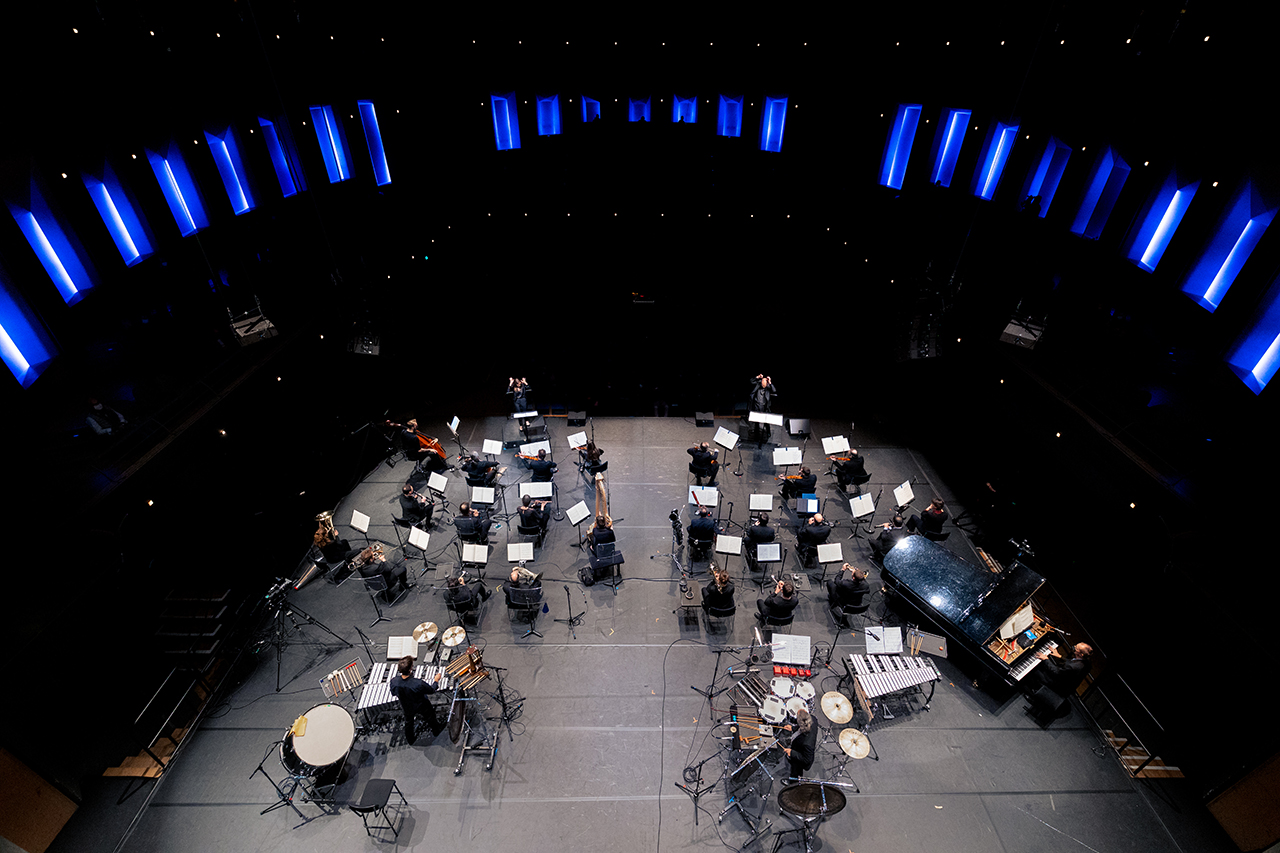)
